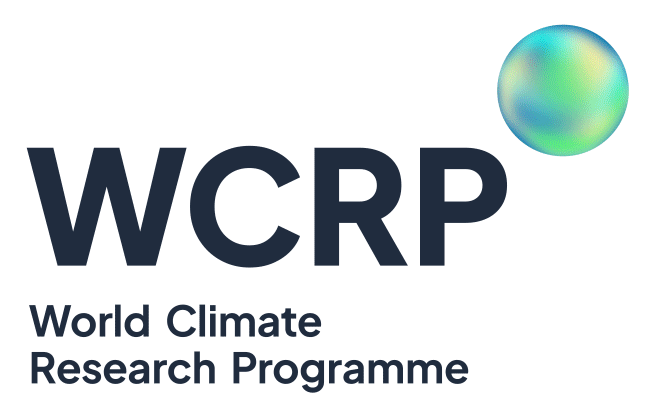Ocean Synthesis/Reanalysis Efforts
There is increasing demand for historical records of the ocean climate. These are needed as a reference for monitoring the current state of the climate, and also to initialise and validate long-range (e.g. seasonal to decadal) forecasts. Observations alone are often inadequate to generate the required estimate of the ocean variables. Ocean model simulations can provide some insight on the ocean variability, but they are affected by biases due to errors in model formulation, specification of initial states and forcing, and are not directly constrained by observations. Ocean reanalyses are the combination of ocean models, atmospheric forcing fluxes and ocean observations via data assimilation methods and have the potential to provide more accurate information than observation-only or model-only based ocean estimations.
Ocean reanalysis
The production of ocean reanalyses (ORAs hereafter) is now an established activity in several research and operational centres. ORAs are revisited every so often, and new ‘vintages’ are produced at intervals of about five years, as improvements in ocean models, data assimilation methods, forcing fluxes or ocean observations become available. The previous vintage of ORAs (produced around 2006) has already been documented (Stammer et al., 2010). A new vintage has recently been generated, which has come about through the availability of new surface forcing fluxes (from new atmospheric reanalyses), improved quality controlled ocean datasets, including important corrections to the observations, as well as the steady improvement in the ocean models and data assimilation methods. There are lower resolution reanalyses (~1 degree horizontal resolution), spanning a long time-period of typically 50 years, as well as higher resolution products (about ¼ of degree), available for shorter records, usually the altimeter period 1993-onwards.
Ocean Reanalysis Intercomparison Project (ORA-IP)
In spite of the continuous improvements in methodology, the estimation of the historical ocean state with reliable error estimates is a major challenge. In addition to the estimation of the three-dimensional ocean state at a given time (the analysis problem), an ocean reanalysis also provides an estimation of the time evolution. The time evolution represented by an ORA will be sensitive to the temporal variations of the observing system, to the errors of the ocean model, atmospheric fluxes and assimilation system, which are often flow dependent, and not easy to estimate. All these factors contribute to the so-called structural uncertainty, i.e. the uncertainty associated with the methodology and that cannot be sampled with a single system. A crude but pragmatic way of estimating the current uncertainty in our ability to measure key ocean variables is to carry out an intercomparison of ORAs within the framework of a multi-reanalysis ensemble approach. For it to work, it is necessary that the individual components are sufficiently distinct while at the same time have similar levels of error (i.e. equally likely).
There is also need for routine coordinated evaluation of ORAs, which would exploit the existing information for a variety of purposes, namely (i) quantifying uncertainty, (ii) measuring progress in the quality of the reanalyses and (iii) producing indices for ocean monitoring with associated error estimates. These are the motivations for ongoing Ocean Reanalyses Intercomparison Project (ORA-IP). An overview of the project is summarised in Balmaseda et al. (2015) and in the CLIVAR Exchanges Speciall Issue "Ongoing Efforts on Ocean Reanalyses Intercomparison".
ORAIP v1: comparison of Ocean Reanalyses vintage 2010
http://icdc.cen.uni-hamburg.de/1/daten/reanalysis-ocean/oraip.html
Articles published in the Climate Dynamics special issue, as part of the ORA-IP
- Artic sea-ice (Chevallier et al., 2016)
- Atlantic MOC (Karspeck et al., 2015)
- Eddy-permitting global ocean reanalyses - MyOcean (Masina et al., 2015)
- Steric sea level (Storto et al., 2015)
- Ocean heat content (Palmer et al., 2015)
- Upper ocean salinity (Shi et al., 2015)
- Air-sea heat fluxes (Valdivieso et al., 2015)
- Mixed layer depth in the North Pacific (Toyoda et al., 2015)
- Eddy-permitting ORAP5 (Zuo et al., 2015)
- Arctic sea ice in ORAP5 (Tietsche et al., 2015)
ORAIP v0: comparison of Ocean Reanalyses vintage 2006
Results of the intercomparison effort made with the 2006 vintage is summarised in the documents below.
| Presentations | Discussion Leads | |
|
Group 1: RMS Model-Data Misfits (SSH) |
Patrick Heimbach and Dimitris Menemenlis |
|
|
Group 1: RMS Model-Data Misfits (Climatology) |
||
|
Group 1: RMS Model-Data Misfits (In Situ) |
||
|
Group 2: Meridional Transports |
Armin Koehl |
|
|
Group 3: Heat and Salt Content |
Magdalena Balmaseda and Anthony Weaver |
|
|
Group 4: Sea Level Changes |
||
|
Group 5: Transports through Key Regions |
Tong Lee |
|
|
Group 6: Water Masses |
Keith Haines and Tong Lee |
|
|
Group 7: Indices |
Albert Fischer |
|
|
Group 8: Surface Fluxes |
Lisan Yu |
CREATE-IP
A web-based data repository of a set of recently generated multi-decadal ocean reanalysis products as well as their ensemble average and spread have been made available through the Earth System Grid (https://esgf.nccs.nasa.gov/search/create-ip/) in CF-complaint format. A related visualization and comparison tool is also available (http://cds-cv.nccs.nasa.gov/CREATE-V/).
Multi-ORA
Although new reanalysis vintages are produced relatively infrequently, some of the ORAs are continuously updated in quasi-real-time, with the model and data assimilation methodology kept fixed. This is the case for the ORAs produced in operational centres to initialize coupled forecasts. These real-time ORAs have the additional advantage that they allow monitoring of relevant climate variables (Xue et al., 2010). The monitoring of the tropical Pacific conditions with a multi ocean reanalysis system (multi-ORA) is now a reality (Xue et al., 2017), as can be seen in the NCEP ocean monitoring pages
- Anomalies based on 1981-2010 (http://www.cpc.ncep.noaa.gov/products/GODAS/multiora_body.html)
- Anomalies based on 1993-2013 (http://www.cpc.ncep.noaa.gov/products/GODAS/multiora93_body.html)










